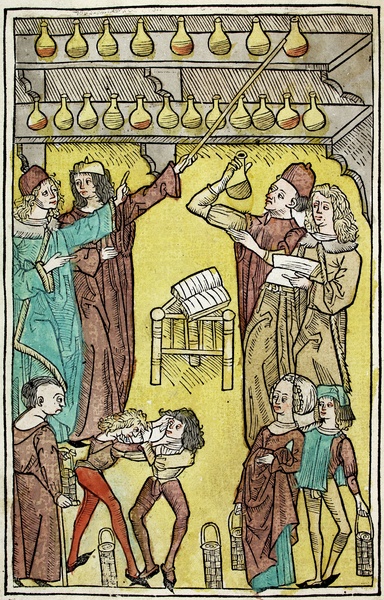A new exhibition which includes some of the earliest recorded interpretations of the natural sciences has opened at the University of Aberdeen.
Pharmacopoeia, meaning ‘preparation of drugs’, is an exhibition featuring rare and beautiful printed and manuscript material, which explores the study of the medicinal qualities of plants in the treatment of disease.
It makes links with contemporary scientific research and practice at the University of Aberdeen including cutting edge examples from the Marine Biodiscovery Centre as well as the Kosterlitz Centre for Therapeutics.
Pharmacopoeia, at the Gallery in the University of Aberdeen’s library, includes early records of plants for specific medical treatments which were recorded in texts such as the late 15th century De Hortus Sanitatis.
The exhibition will also explore how medical knowledge was shared through the Renaissance and beyond.
Siobhan Convery, Head of Special Collections at the University of Aberdeen, said: “Advances in pharmacy and medical chemistry are evident in the popular botanical literature of the 17th century such as A Curious Herbal by the Aberdonian botanist and illustrator, Elizabeth Blackwell. The many items on display demonstrate this history from its roots in a monastic setting through to modern chemical isolation and synthesis.
“The exhibition also highlights the work of the early plant collectors such as Professor James Trail, who made a substantial contribution to the University Herbarium and the Cruickshank Botanic Gardens.”
As well as tracing the history of the use of plants in medicine, the exhibition explores how plants are still being used to find new drugs, even if there is no historical use of the plant to treat disease.
Ms Convery added: “Scientists at the University of Aberdeen are engaged in the search for new treatments for infection, inflammation, parasitic diseases and cancer using nature’s bounty.
“More recently they have turned to investigating microorganisms from extreme environments such as the Mariana trench, the deepest place on earth, the Atacama desert, the driest place on earth and the Dead Sea. Cultivating bacteria and fungi from these environments has led to the discovery of unique compounds by Aberdeen scientists which may form the basis of future treatments.”
The exhibition, which runs until December 1, is located in the Gallery on the ground floor of the University’s library on Bedford Road.


